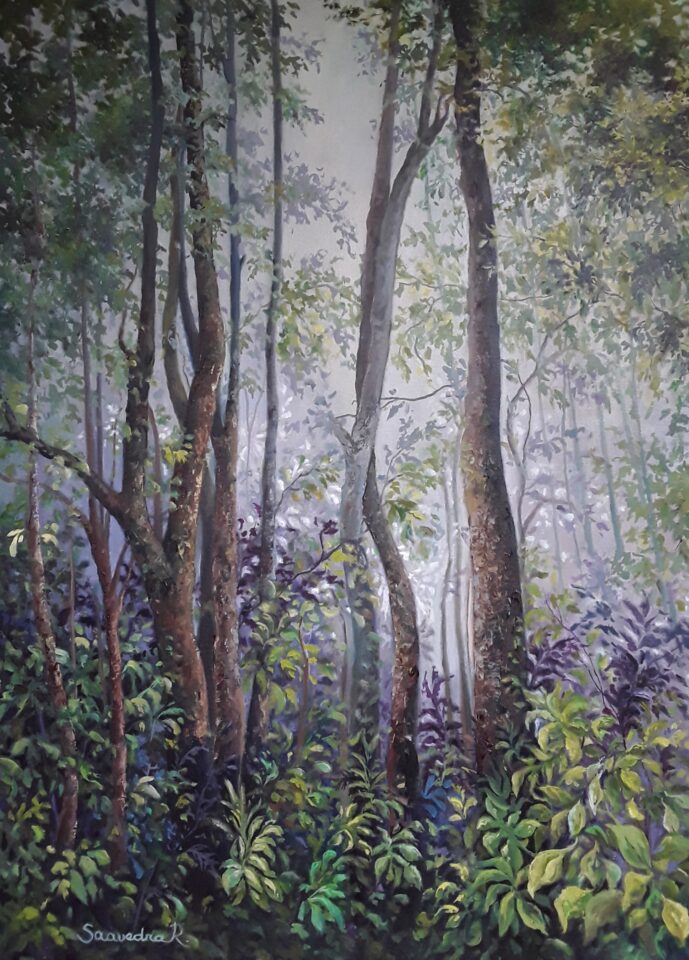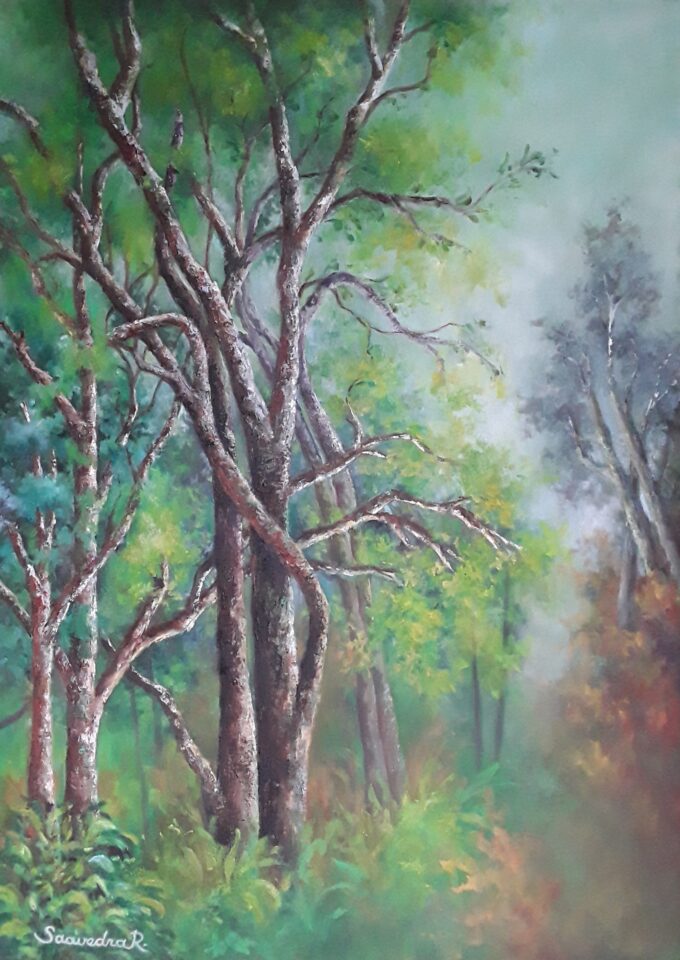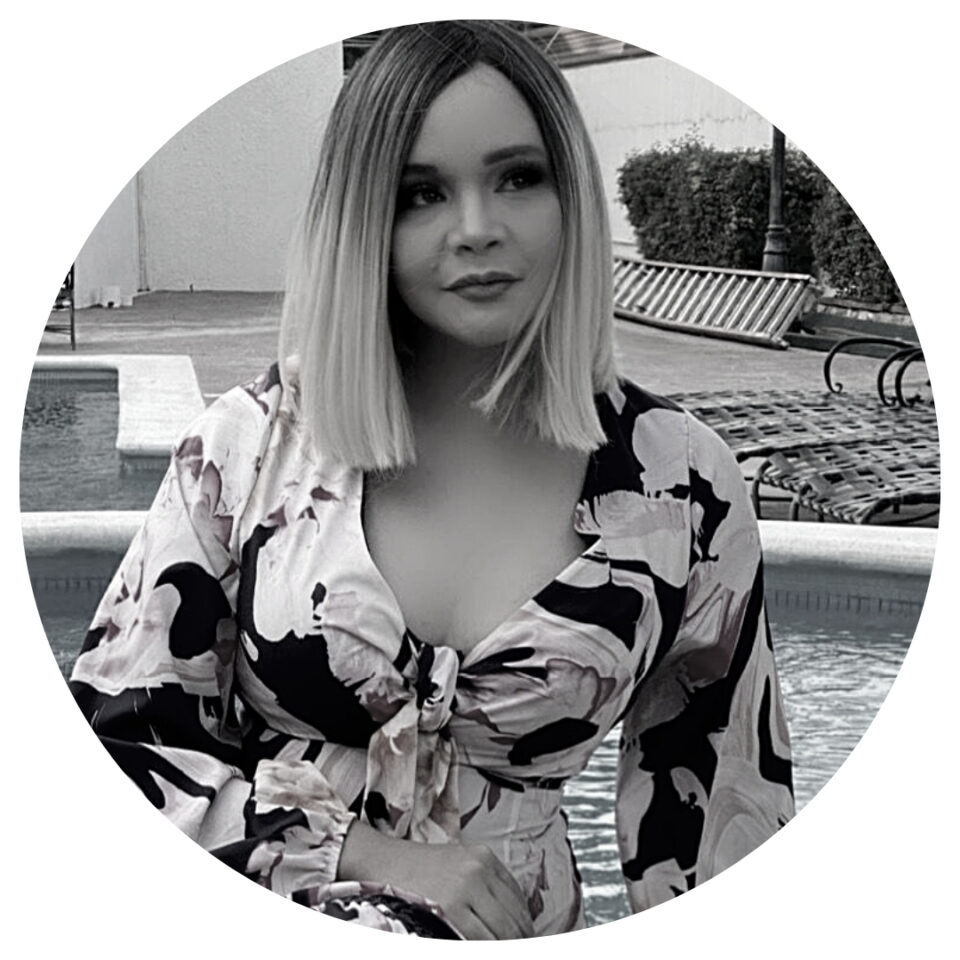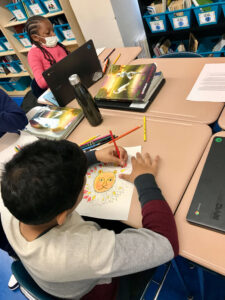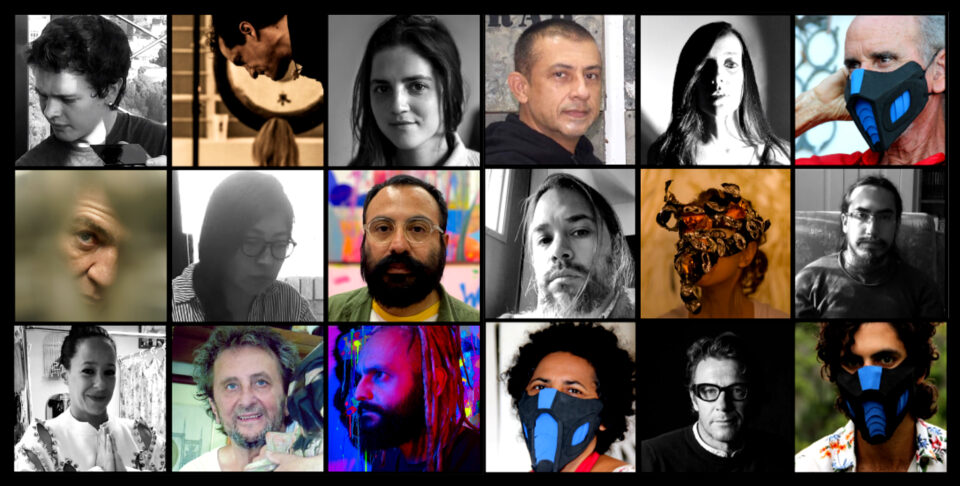
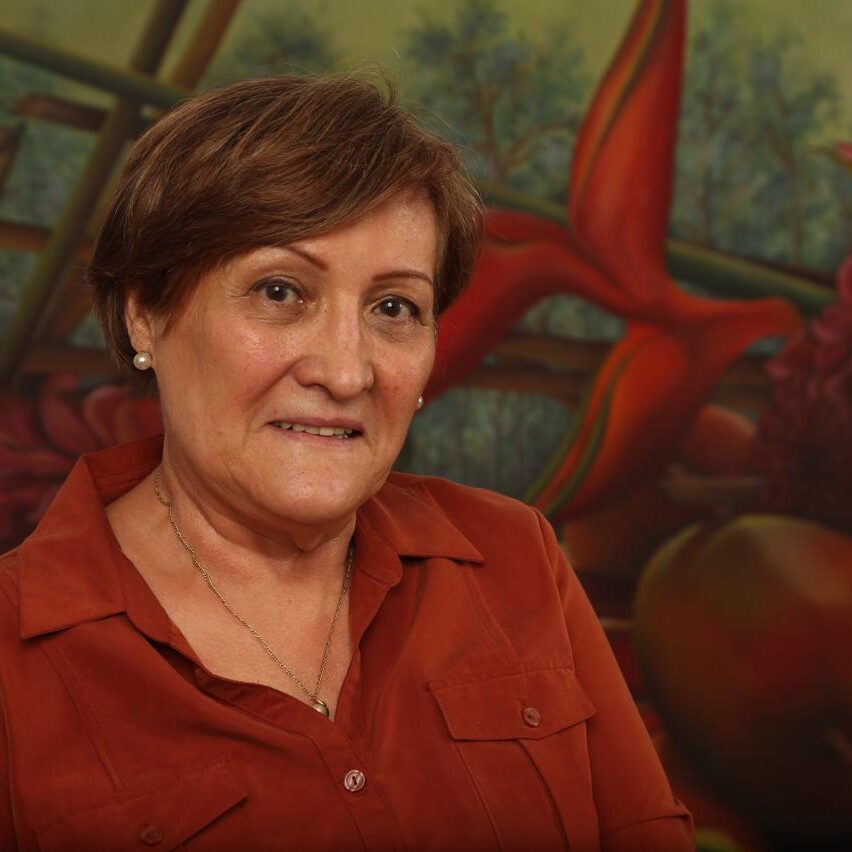
María Claudia Saavedra is a Colombian visual artist, born in Medellín, the city where she is based. She is an economist from the University of Antioquia and a doctorate in economics from the Autonomous University of Barcelona UAB. Her artistic training does not correspond to a formal institutional project, she has learned it in the workshops of teachers Carlos Mejía, Jorge Cárdenas, Luís Ángel Hernández, and Dorian Flórez, from whom she has received important lessons. She is a full member of “Mondial Art Academia” and is part of: Arte al Paso Gallery, Ar7seven, Red de Mujeres Artistas de Medellín REMART, and ArtEstar. Since 2000, her works have been exhibited in individual and collective exhibitions, in her country and abroad.
The common denominator of Saavedra’s work is nature. Thematically she is interested in flowers, landscapes, forests, mists, vegetation, and foliage. Her works invite the viewer to a journey through rural environments to highlight, on the trails or in the thick, the rays of light that filter through the branches or the air that circulates between the trees and often hides in dense mists. Her landscapes don’t have time, they can show the first lights of the morning or the shadows of the late afternoon, in either case a variety of structures and the richness of contrasts are present.
Flowers, with all their chromatic richness, is another of the themes that she tackles to recreate their whimsical shapes and different shades. She occasionally dabbles in the portrait genre as well. She works with oil and acrylic on canvas with a palette of broken colors where green tones predominate. In accordance with her classical training, her pictorial work relies on glazes, she applies a method that goes from dark to light colors, to finally give all the highlights and brightness. Her style is figurative without pretense of realism, the result of her work is close to impressionism, although she has no interest in enrolling in any pictorial school.
She is concerned with recognizing the sensations that derive from a careful observation of reality, an observation that goes beyond the subtle to understand the details and their relationships, but mainly to grasp and dimension the contexts, in a way that she can share those sensations with the viewer. In this order of ideas, her approach to the natural world is done from a double perspective: on the one hand, the aesthetic point of view that highlights the relationships between lights, shadows, shapes and colors, to account for a diverse space and complex; and on the other, the ethical point of view with a call to recognize the entire dimension that the environment encompasses and the need for awareness to protect and conserve it for a sustainable world. Thus, it is possible to share the sensitivity of a time, evoke memory and incorporate the idea of the future.


